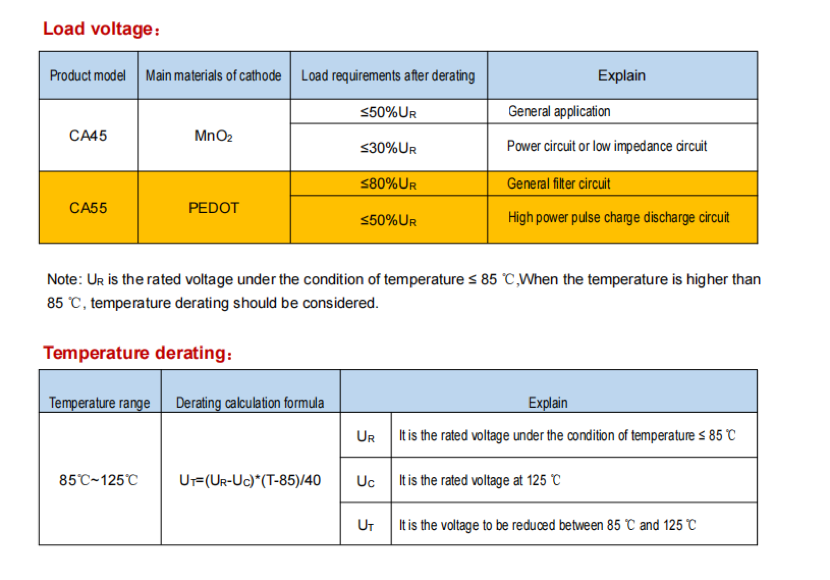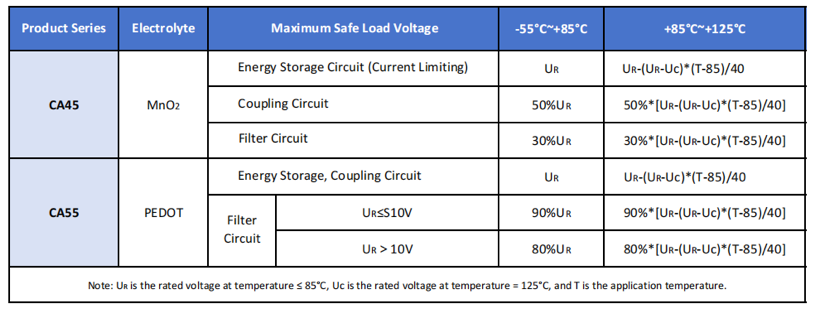2025-07-06
Derating tantalum capacitors is critical to ensuring long-term reliability, preventing catastrophic failures, and optimizing performance in high-stress electronic applications. Tantalum capacitor derating is the practice of operating the component below its maximum rated voltage, current, or temperature to improve reliability and prevent failure under stress conditions. Next, we’ll delve into the intricacies of tantalum capacitors derating, focuing on the tantalum capacitor products offered by Hongda Capacitors.
These tantalum caps are widely used on applications such as military, portable consumer, computer/ server, network infrastracture equipment, and many others.
Polymer capacitors are constructed with a highly conductive polymer as the cathode system. For the anode, tantanum is used together with tantalum oxide dielectric. This construction gives polymer capacitors all the advantages of traditional tantalum capacitors while reducing equivalent series resistance (ESR) and eliminating manganese dioxide, which is a source of catastrophic failure in traditional tantalum capacitors.
Our CA55 Polymer tantalum caps can replace:
1. AVX--TCJ, TCM series
2. Kemet--T520, T525, T530 series
3. Vishay--T55 series
Hongda Capacitors is a leading passive component manufacturer that produces capacitors, inductors and other components with one-stop services.
We offer various tantalum capacitors, including:
1) CA42 Radial Epoxy Dipped Tantalum Capacitor (General Purpose)
2) CA45 Chip Tantalum Capacitors (General Purpose)
3) CA45L Low ESR Chip Tantalum Capacitors
4) CA55 Polymer Tantalum Capacitors
5) HTHC, HTHC2, etc Hybrid Tantalum Capacitors
6) CA53, CA351, CAK86, etc Axial Tantalum Capacitors.
To ensure long-term reliability of tantalum capacitors and prevent stress-induced failures (such as short circuits or thermal runaway), the following derating methods are typically employed on polymer tantalum caps:


In summary, derating is not optional—it is a fundamental design practice for any circuit using tantalum capacitors. Ignoring it risks premature failures, while proper implementation ensures robust, long-lasting performance in even the most challenging environments.